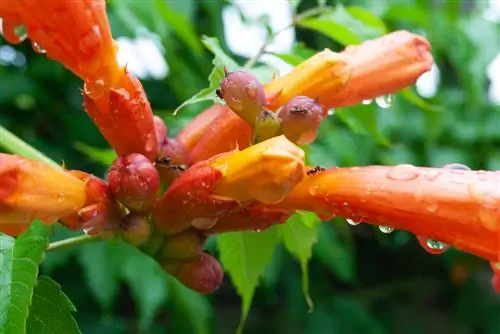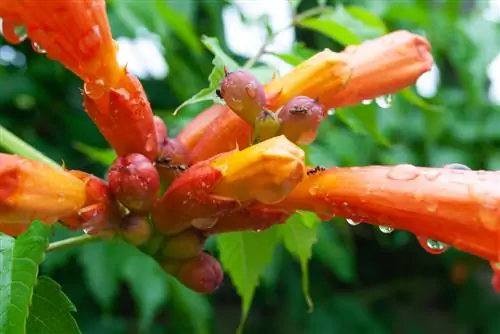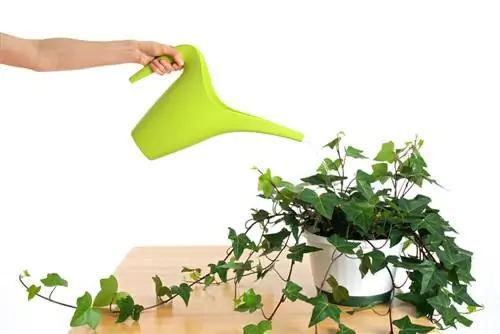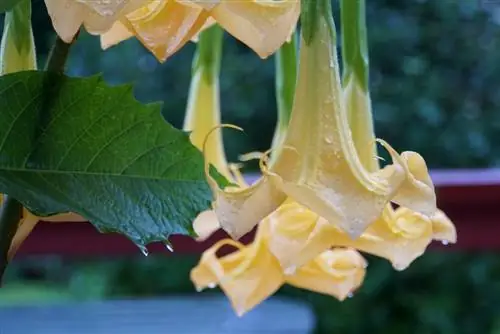- Author admin [email protected].
- Public 2023-12-16 16:46.
- Last modified 2025-01-23 11:22.
When the trumpet flower awakens from its winter rest, its lush growth is imminent. First the green shoots appear and begin to climb meters high. The typical trumpet flowers follow in large numbers later. What care gives her the strength to achieve this feat?

How do you properly care for the trumpet flower?
Caring for the trumpet flower includes: location with sufficient light, providing climbing support, regular watering without waterlogging, fertilizing with long-term fertilizer for potted plants, vigorous pruning in spring and frost-protected overwintering.
Location and climbing aid
Make caring for the trumpet flower easier by creating the basis for a he althy and flower-filled life. So it will refuse us its flowers in shady places and also if it is exposed to high heat. To prevent the thin tendrils of the climbing plant from breaking, you should provide it with a climbing aid soon after planting.
Watering is an important care point
The trumpet flower does not like dryness and cannot tolerate long-term wetness. Mulch the root area to keep it moist. In addition, ensure there is sufficient water supply all year round, especially for potted plants.
- Earth must not dry out
- Water plants as needed, even in winter
- Completely moisten the soil in containers
- Avoid waterlogging
Fertilizing is hardly necessary
Plants in the pot are fertilized with long-term fertilizer (€10.00 at Amazon) at the start of budding. If the climbing plant grows outside in nutrient-rich soil, fertilizing is unnecessary. You can only give it some compost every now and then in the spring.
Tip
Avoid nitrogen-containing fertilizers for this climbing plant. Although these stimulate growth, they prevent abundant flowering.
Cutting is mandatory
This climbing plant only blooms on new shoots. It forms these in large numbers if it is cut back vigorously before budding:
- Cut early February to early March
- reset all side shoots on cones
- only about 3-4 eyes should remain
- remove thin side shoots completely
Safe wintering
The American Trumpet Flower and the hybrid Great Trumpet Flower are hardy enough to spend the winter outside. However, when young they are more sensitive to frost and must be protected with leaves and fir branches.
The Chinese trumpet flower is not sufficiently frost hardy for our winters. It should therefore be kept in a bucket so that it can spend the winter indoors. Other container specimens should also overwinter in a frost-free winter quarters or at least be protected from severe frost.






